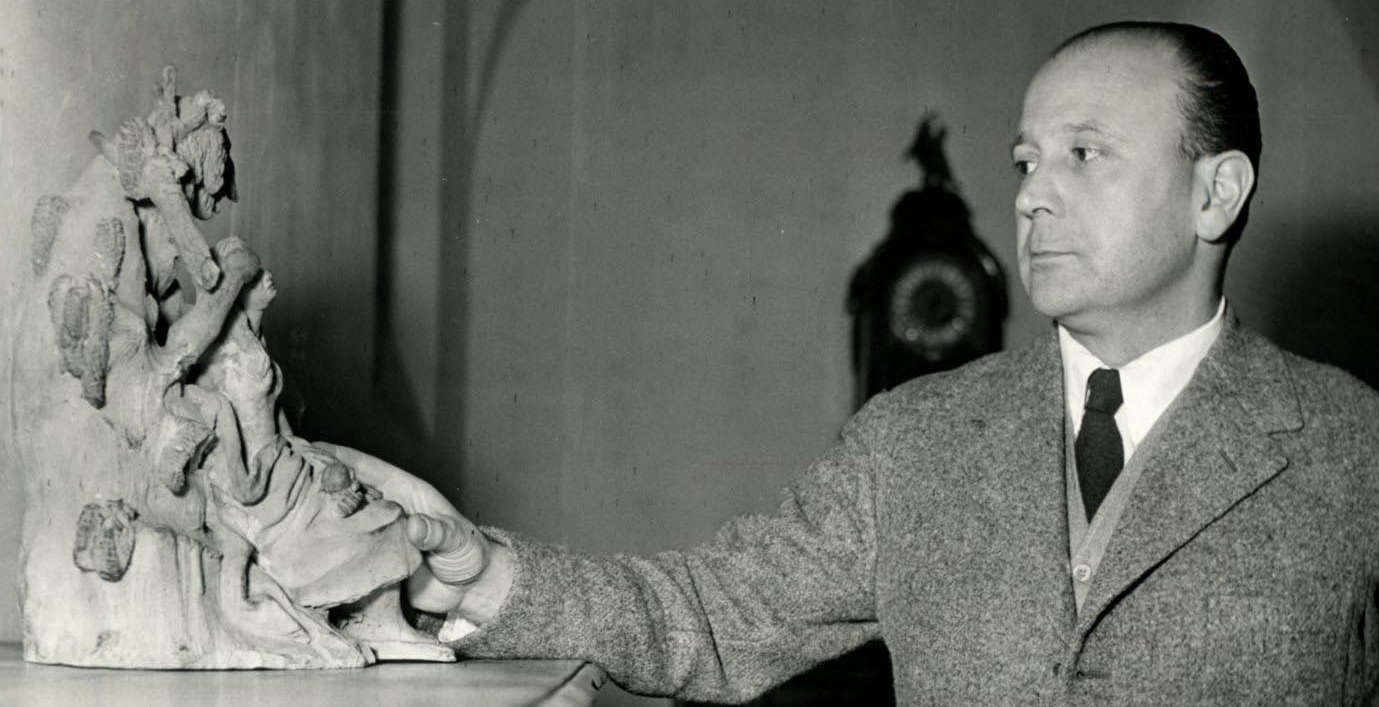Two Tuscan villages, Guardistallo (Pisa) and Bibbona (Livorno), united in the name of Rodolfo Siviero (Guardistallo, 1911 - Florence, 1983), the minister plenipotentiary known as “the secret agent of art” for his tireless activity in recovering stolen works during World War II. Starting June 1 and running until Oct. 26, 2025, these two municipalities are celebrating one of the most enigmatic and fascinating figures of the Italian twentieth century with a large, widespread exhibition titled The Life of Rodolfo Siviero, Between the Renaissance and De Chirico, set up partly at the Marchionneschi Theater in Guardistallo, a few meters from his birthplace, and partly at the exhibition center of the “Old Town” in Bibbona.
The exhibition-born of a collaboration between the two municipal administrations, with the support of the Region of Tuscany-is not only a biographical tribute. It is also an opportunity to discover a selection of paintings and sculptures belonging to the Siviero collection, now owned by the region, and temporarily inaccessible to the public because the Casa Museo Rodolfo Siviero in Florence is closed for works until 2026. The exhibition therefore represents a unique opportunity to take a close look at works by artists such as Giorgio De Chirico, Lamberto Pignotti, Bruno Liberi, Jan Frans van Bloemen, Domenico di Zanobi, Giacomo Manzù, Mario Moschi and Quinto Martini, selected to create a visual dialogue between Renaissance classicism and modern suggestions, in the spirit that animated Siviero’s collecting thought.
“The Siviero collection, now owned by the region, goes on the road and becomes a vehicle for sharing and cohesion,” said Tuscany Region President Eugenio Giani, “to give value to the concept of widespread Tuscany, as defined by Law No. 11/2025, that is, to the enhancement of those treasures and peculiarities that make every corner of our region unique and precious. In Tuscany, history, art and culture are widely distributed, and networking all this wealth exponentially increases its value.” According to Giani, the exhibition is also the best way to remember a man who made art and the protection of Italian heritage his mission, involving precisely the places of his origins.

Guardistallo, where Rodolfo Siviero was born on December 24, 1911, thus becomes the starting point of an enhancement path that also has a strong symbolic value. Officially opened on Sunday, June 1, at 5 p.m. at the Bibbona exhibition center, the exhibition will be accompanied at 6:30 p.m., at the Marchionneschi Theater in Guardistallo, by the screening of the video of the play Avrei preferito essere un gabbiano, a production of the Teatro dell’Elce in Florence, signed by Marco Di Costanzo. A further theatrical tribute to Siviero’s complex personal and professional story, between civil commitment, diplomatic activity and artistic passion.
A character with many faces (anti-fascist, secret agent, art critic, collector and state official) Rodolfo Siviero operated in one of the most delicate moments of Italian history. During World War II he was first involved in intelligence activities, then, with the armistice, he became head of the Delegation for the recovery of works of art. After the war ended, he managed to bring back to Italy hundreds of masterpieces stolen by the Nazis and ended up in Germany or other countries. Among the most famous works recovered thanks to his intervention are the tablets with the exploits of Hercules by Pollaiolo, now housed in the Uffizi, Titian’s Danae, returned to the Capodimonte Museum, and the Lancellotti Disk, currently on display at the National Museum of Rome.

But Siviero did not act alone. Among his most trusted collaborators was Giorgio Castelfranco, art historian and director of the Palazzo Pitti Gallery until 1938, when he was removed following the enactment of the racial laws. Castelfranco then continued his work with Siviero in the difficult task of mapping, tracing and recovering what had been taken from Italy during the war. It was an activity that mixed diplomacy and espionage, deep knowledge of the antiquities market and a rare tenacity.
Upon his death in 1983, Rodolfo Siviero left his Florentine home on the Lungarno Serristori and his precious art collection to the Region of Tuscany by will. Since then, the Siviero House Museum has become a point of reference for scholars and visitors. Currently, however, it is closed for renovation and reorganization of the collections. Hence the idea to “put the collection on the road,” opening new spaces of access and knowledge in the territory.
The exhibition in the two Tuscan villages offers not only an opportunity to admire rarely visible works of art, but also to retrace a personal story that is intertwined with the history of Italy and the lesser-known dynamics of cultural diplomacy after World War II. At a time when the illicit trafficking of cultural goods is still a topical issue, Siviero’s example remains as pertinent as ever. The Life of Rodolfo Siviero, Between the Renaissance and De Chirico is therefore not only an exhibition, but an invitation to rediscover a crucial figure in twentieth-century Italian culture, to reflect on the value of art as a collective good and the responsibility to preserve, protect and tell its story.
The exhibition project is also designed to involve schools and groups, thanks to guided tours by reservation curated by the Itinera cooperative (for information: tel. 0586 894563, email segreteria@itinera.info). Opening hours vary according to the months: in June and September the exhibition will be open on Fridays, Saturdays and Sundays from 6 to 10 p.m.; in July and August every day from 6 to 11 p.m.; in October still on weekends, but with earlier hours from 4 to 8 p.m.
 |
| An exhibition in Tuscany celebrates Rodolfo Siviero, the secret agent of Italian art |
Warning: the translation into English of the original Italian article was created using automatic tools. We undertake to review all articles, but we do not guarantee the total absence of inaccuracies in the translation due to the program. You can find the original by clicking on the ITA button. If you find any mistake,please contact us.